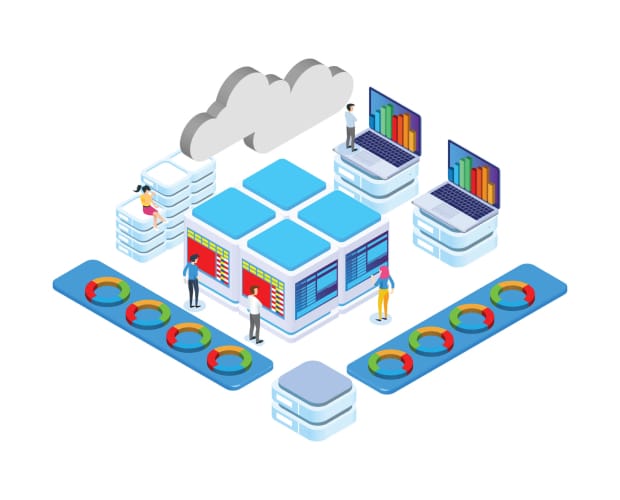101-500: LPIC-1 Exam 101

Get ready for your exam by enrolling in our comprehensive training course. This course includes a full set of instructional videos designed to equip you with in-depth knowledge essential for passing the certification exam with flying colors.
$13.74 / $24.99
Introduction
-
1. Course outline11m
Preperation of practice
-
1. Installation Virtualbox5m
-
2. Installation Ubuntu17m
-
3. Installation Fedora11m
-
4. Linux on Virtualbox5m
Introduction to the console
-
1. Introduction to the console23m
101.1 Determine and configure hardware settings
-
1. Virtual filesystems11m
-
2. Devices filesystem5m
-
3. Kernel modules17m
-
4. Display hardware11m
101.2 Boot the system
-
1. Boot process - part 113m
-
2. Boot process - part 27m
-
3. SysVinit19m
-
4. upstart6m
-
5. systemd10m
101.3 Change runlevels / boot targets and shutdown or reboot system
-
1. Runlevel10m
-
2. Boot targets17m
102.1: Plan hard disk partitioning
-
1. Directory structure according to FHS24m
-
2. SWAP6m
-
3. Partitions15m
-
4. Mount8m
-
5. LVM9m
102.2: Install a boot manager
-
1. GRUB Legacy8m
-
2. GRUB 28m
102.3: Manage shared libraries
-
1. Shared Libraries13m
102.4: Use debian package management
-
1. dpkg14m
-
2. apt16m
-
3. aptitude8m
102.5: Using RPM and YUM package management
-
1. rpm14m
-
2. yum14m
-
3. zypper6m
102.6: Linux as guest virtualization
-
1. Linux as guest virtualization15m
103.1: Working on the command line
-
1. History, Manpages and echo13m
-
2. bash, env, set, unset, export19m
103.2: Process text streams with filters
-
1. cat, head, tail13m
-
2. zcat, bzcat, xzcat3m
-
3. nl, wc, od9m
-
4. md5sum, sha256sum, sha512sum10m
-
5. sort, uniq, tr, cut, paste22m
-
6. sed, split10m
103.3: Basic file management
-
1. cd, cp und mv23m
-
2. touch, file und ls19m
-
3. mkdir, rmdir, rm, find21m
-
4. dd7m
-
5. tar20m
-
6. cpio11m
-
7. gzip, gunzip, bzip2, bunzip2, xz, unxz10m
-
8. File Globbing11m
103.4: Using streams, pipes and diversions
-
1. STDIN, STDOUT, STDERR, <, <<, <<<, >, >>, |31m
-
2. xargs8m
103.5: Create, monitor and terminate processes
-
1. ps, top, uptime, free21m
-
2. pgrep, kill17m
-
3. pkill, killall6m
-
4. nohup, screen, tmux17m
-
5. watch2m
103.6: Change process execution priorities
-
1. nice, renice, ps, top9m
103.7: Searching text files with regular expressions
-
1. regex, grep, egrep, fgrep16m
103.8: Basic editing of files
-
1. vi - Part 115m
-
2. vi - Part 211m
104.1: Create partitions and file systems
-
1. File systems, fdisk part 113m
-
2. fdisk part 2, mkfs, mkswap24m
-
3. gdisk, parted10m
104.2: Ensuring the integrity of file systems
-
1. du, df7m
-
2. fsck, mke2fs8m
-
3. tune2fs7m
-
4. xfs_repair, xfs_db, xfs_fsr5m
104.3: Controlling the mounting and unmounting of file systems
-
1. mount, umount9m
-
2. /etc/fstab10m
-
3. blkid, systemd mount units10m
104.5: Manage file access rights and ownership
-
1. Permissions, chmod17m
-
2. Sticky Bit, SETUID, SETGID17m
-
3. chown, chgrp8m
-
4. umask13m
104.6: Creating and changing symbolic and hard links
-
1. hardlink, softlink, ln11m
104.7: Find system files and put files in the right place
-
1. locate, whereis, which, type13m
105.1: Customize and use the shell environment
-
1. The shell environment14m
-
2. Variables17m
105.2: Adapt or write simple scripts
-
1. Chained commands10m
-
2. Variables14m
-
3. if, then, elif, else, read30m
-
4. case8m
-
5. while, do, done7m
-
6. for, seq6m
-
7. test, exec4m
106.1: Install and configure X11
-
1. Debian installation without X window10m
-
2. X-Window System11m
-
3. DISPLAY, xhost, xauth14m
-
4. Display and window manager3m
106.2: Graphic desktops
-
1. KDE, Gnome, Xfce, X11, XDMCP, VNC, Spice, RDP9m
106.3: Accessibility
-
1. Accessibility10m
107.1: Manage user and group accounts and associated system files
-
1. useradd, userdel, passwd20m
-
2. groupadd, groupdel, etc-group, getent6m
107.2: Automate system administration tasks by scheduling jobs
-
1. cron, crontab19m
-
2. cron.allow and cron.deny9m
-
3. anacron and at15m
-
4. systemctl and systemd-run9m
107.3: Localization and Internationalization
-
1. Character codes, iconv14m
-
2. locales, LANG, LC_*22m
-
3. Time zones11m
108.1: Manage the system time
-
1. date, hwclock17m
-
2. ntpd, ntpdate, chrony26m
108.2: System logging
-
1. syslog, rsyslog14m
-
2. journalctl, logger, systemd-cat14m
108.3: Basics of Mail Transfer Agents (MTA)
-
1. sendmail, postfix, mailq17m
108.4: Manage printers and printing processes
-
1. CUPS, lpr, lpq, lpadmin, lpc20m
109.1: Basics of Internet Protocols
-
1. OSI model, ports, address classes14m
-
2. IPv4 addresses26m
-
3. Subnet masks23m
-
4. IPv6 addresses14m
109.2: Persistent network configuration
-
1. nmcli18m
-
2. ifup, ifdown, hostname, hostnamectl9m
-
3. etc/hosts, /etc/resolv.conf, /etc/nsswitch.conf6m
109.3: Basic Network Troubleshooting
-
1. ifconfig, hostname11m
-
2. route, traceroute, tracepath18m
-
3. netstat, nc12m
-
4. ip8m
109.4: Configuring the client-side DNS
-
1. nslookup, host, dig, getent10m
110.1: Perform security administration tasks
-
1. find, chage, passwd, ulimit, lsof, fuser13m
-
2. w, who, sudo, su, /etc/sudoers12m
110.2: Securing a computer
-
1. etc/nologin, xinetd, systemd.socket17m
110.3: Protecting data with encryption
-
1. ssh, scp18m
-
2. ssh_conf, sshd_conf8m
-
3. ssh-keygen, encryption methods16m
-
4. Create and integrate new keys, ssh-agent9m
-
5. GnuPG, gpg-agent17m

